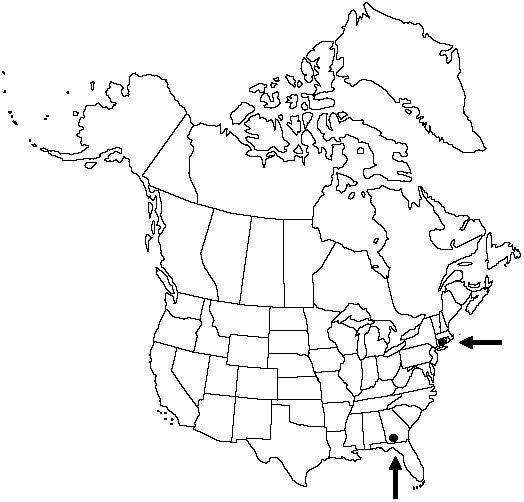Adiantum hispidulum
J. Bot. (Schrader) 1800(2): 82. 1801.
Stems short-creeping; scales dark reddish-brown, concolored, margins entire. Leaves arching, clustered, 20–37 cm. Petiole 1–2 mm diam., adaxially hispid, not glaucous. Blade lanceolate, pinnate or occasionally pseudopedate, 1-pinnate distally, 12–18 × 6.5–8 cm; proximal pinnae 1–4-pinnate; indument of light-colored, sparse, multicellular hairs; rachis straight, densely hispid, not glaucous. Segment stalks 0.2–0.3 mm, dark color generally entering into segment base. Ultimate segments oblong to long-triangular, ca. 2 times as long as broad, progressively reduced toward apex of penultimate divisions; basiscopic margin oblique; acroscopic margin of fertile segments crenulate, sterile segments sharply denticulate; apex obtuse or acute. False indusia ± round, 0.6–0.9 mm diam., covered with reddish-brown, stiff, needlelike bristles. Spores mostly 40–60 µm diam.
Phenology: Sporulating summer–fall.
Habitat: Banks and old walls
Elevation: 0–100 m
Distribution

Introduced; Conn., Ga., Asia in s India, e Africa, Pacific Islands
Discussion
Adiantum hispidulum is represented by sporadic escapes from cultivation in the flora, possibly naturalized locally. It also has been reported from Florida and Louisiana.
Selected References
None.